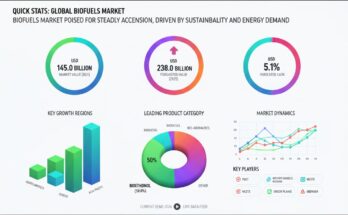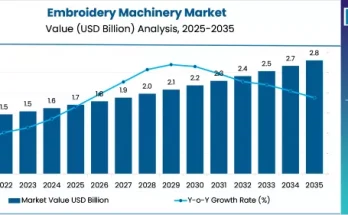The global composites testing market is expected to grow strongly over the next decade, driven by increased use of lightweight, high-strength composite materials in key industries, rapid innovation in testing technology, and rising safety and regulatory requirements. The market, valued at USD 2.0 billion in 2025, is projected to reach USD 3.9 billion by 2035, expanding at a compound annual growth rate (CAGR) of 5.2%.
Market Dynamics & Growth Drivers
The adoption of composite materials has soared in sectors like aerospace, automotive, and wind energy. These industries demand rigorous testing to ensure the performance, safety, and durability of composite components.
Technological advancements are accelerating market expansion. Non-destructive testing (NDT) methods such as ultrasonic scanning, thermographic inspection, and more are increasingly used. Meanwhile, AI-based analytics and digital twin technologies are improving test precision, enabling predictive insights, and reducing testing time.
The renewable energy sector, especially wind power, presents a major opportunity. As wind turbine blades are increasingly made from composites, testing services are in high demand to ensure structural integrity and long-term performance.
Key Challenges & Risks
Despite the positive outlook, the market faces certain constraints. High costs of advanced testing equipment — like X-ray CT scanners, thermographic cameras, and other NDT tools — pose barriers, especially for smaller testing labs.
There is also a shortage of skilled testing professionals worldwide, which limits adoption of sophisticated testing methods.
Another concern is the lack of standardized test protocols across regions. Varying international standards can delay product qualification and increase compliance costs. Meanwhile, the increasing use of cloud platforms and remote monitoring in testing workflows raises cybersecurity and data integrity risks.
Market Segmentation & Trends
-
By Testing Method: The market is broadly split between destructive and non-destructive testing. Destructive testing — such as tensile, compression, and fatigue tests — remains vital in safety-critical applications and is projected to grow at a strong rate.
-
By Product: Among composite types, ceramic matrix composites (CMCs) are expected to show the fastest growth (CAGR ~10.3%), driven by their high-temperature resistance and strength, making them attractive for aerospace, defense, and energy applications.
-
By End‑Use Industry:
-
Aerospace & Defense: Ongoing demand for lightweight, high-strength structures requires rigorous material testing.
-
Automotive: Composites help automakers meet emission standards by reducing weight, prompting more testing.
-
Renewable Energy: The wind sector’s growth drives testing for turbine blades and composite structures.
-
Construction: Use of composites in infrastructure—bridges, building facades—is pushing testing requirements.
-
Regional Outlook
-
The U.S. plays a leading role in driving market growth, with strong demand from aerospace, automotive, and renewable energy sectors, combined with advanced regulatory frameworks and adoption of NDT techniques. The U.S. market alone is expected to grow at a CAGR of 5.5% through 2035.
-
China is poised for rapid expansion (projected CAGR ~6.0%) due to its large-scale manufacturing, renewable energy investments, and growing aerospace/automotive industries.
-
Other Key Regions: Europe, especially countries like Germany and the UK, will continue to drive demand backed by their strong aerospace and automotive ecosystems.
Competitive Landscape
Major players in the composites testing market are heavily investing in advanced testing capabilities, global lab footprint, and digital testing platforms. Key companies include:
-
Element Materials Technology
-
Intertek Group
-
Mistras Group, Inc.
-
Westmoreland Mechanical Testing
These players are not just expanding testing capacity, but also focusing on digital transformation, AI-driven analysis, and partnerships with composite manufacturers and regulatory labs.
Future Outlook & Innovations
Over the next decade, several trends are likely to define the composites testing landscape:
-
Digital Twins & Predictive Analytics: Use of digital replicas of composite parts combined with AI to predict failure, optimize designs, and reduce time‑to-market.
-
Automation of Testing Processes: Automated NDT systems and robotics will speed up testing, lower human error, and reduce costs.
-
Sustainability in Testing: As composites play a larger role in green technologies, testing labs will need eco‑friendly practices and standards.
-
Standardization & Regulatory Alignment: Increasing push for unified global testing standards to streamline composite certification and adoption.
-
Cyber‑Secure Testing Platforms: With more testing data being processed remotely and stored in the cloud, data security and integrity will be critical.
Browse Full Report : https://www.factmr.com/report/composites-testing-market
About Fact.MR
Fact.MR is a global market research and consulting firm that provides reliable, data‑driven insights across diverse industries. Their expert analysis helps businesses make informed strategic decisions, identify emerging trends, and capture high-growth opportunities.



